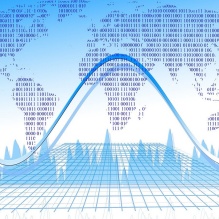Areas of Focus
Our training serves as the foundation for your path-breaking academic or industrial research career. You will be prepared to assume positions in health care, industry and biomedical research settings.
As a student of our program, you can expect to undertake training for research leadership in:
- health and health care clinical informatics
- translational bioinformatics
- clinical research informatics
- public health informatics
- consumer health informatics
In addition to the faculty based in our department, we have dozens of adjunct faculty members with a broad range of informatics research from various UB departments in the schools of Medicine, Dental Medicine, Public Health, Pharmacy, Nursing, Engineering, Management and the College of Arts and Sciences.
Delve Into Five Core Areas
Our department’s graduate training programs emphasize self-study, in-depth discussion and problem solving around five core areas of biomedical information systems application development and research:
Health / clinical informatics
Are you interested in socio-technical and human centered design, workflow analysis, nursing informatics, decision support, medical image integration, PHRs, cybersecurity, implementation science and more? This is the program for you.
We include training in cybersecurity for medical records, medical data in transit and patient-generated medical information (e.g., fitbits, Afib monitors).
Concerns about ransomware and data privacy emerge as the prime fear of medical facilities’ CMIOs and CIOs. Our department has some of the leading experts in cybersecurity for medical data, and we will ensure that our trainees are familiar with this ongoing threat.

Translational bioinformatics
We have a focus on:
- database management and data warehouses
- genomics, epigenetics, proteomics, pharmacogenomics
- predictive modeling and integration of clinical and biological information
- computational drug discovery and beyond
We’ll teach you about the development of innovative research methods and creation of new knowledge — and you’ll learn about our computational drug discovery pipeline, CANDO.

Clinical research informatics
This area includes our big data training program, statistical analysis, clinical effectiveness research, data mining and mixed data integration.
We build, maintain, evaluate and explore research data warehouses for our region.
We examine ETL processes and best practices for data mapping, cross validation and data integration. We explore standards such as SMART on FHIR and clinical terminologies such as SNOMED-CT, LOINC and RxNorm. We’ll make sure you are familiar with NLP and text processing. We also have research in data integration from EHRs, Medicaid and drug treatment centers.

Public health informatics
This area includes especially the role of the social determinants of health, e.g., accessibility to healthy food, accessibility to acute and continuing care, prevalence of responsive and culturally sensitive clinicians, staff and facilities attuned to each groups’ needs — as well as limitations of local transportation.
We teach biosurveillance, public health data, public health workflows, data reporting standards and Patient Safety Organization reporting. We also have an active research program in biosurveillance.

Consumer health informatics
We’ll teach you about health care information technology designed for individuals or selected groups (i.e., those with diabetes or cardiovascular disease patients).
These include patient-focused informatics, health literacy and consumer education.
Ideally, these tools help consumers manage their own health and/or communicate essential information to clinicians. They must incorporate consumer-friendly language and visualization methods. Development of these tools requires analysis of consumers' needs for information.
